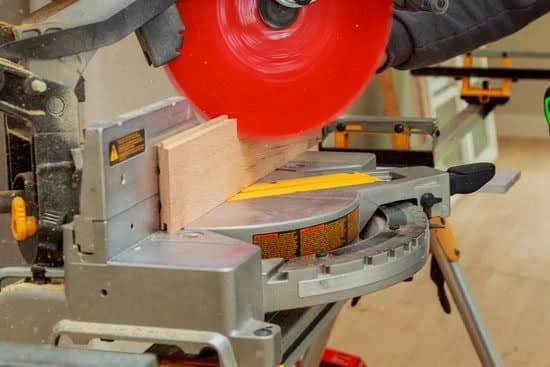In woodworking, precise measurements are crucial to ensuring that projects come together seamlessly. An essential aspect of this precision is accurately measuring angles. Whether you are crafting furniture, cabinets, or other woodwork, knowing how to measure an angle without a protractor woodworking is a valuable skill that can make a significant difference in the outcome of your project.
Angles play a fundamental role in woodworking as they dictate the overall shape and structure of the pieces being created. Understanding how to measure angles correctly is essential for ensuring that all components fit together perfectly, creating a finished product that is both aesthetically pleasing and functional. Without accurate angle measurements, joints may not align correctly, leading to instability and potential structural issues down the line.
While using a protractor is the most straightforward method for measuring angles, there are alternative tools available that can provide equally precise results. By familiarizing yourself with tools like speed squares, bevel gauges, and combination squares, you can effectively measure angles without the need for specialized equipment. In the following sections, we will explore these tools in detail and provide step-by-step guides on how to use them for accurate angle measurement in your woodworking projects.
Understanding the Basics of Angle Measurement
In woodworking, angles play a crucial role in determining the accuracy and precision of cuts, joints, and overall project alignment. Whether you are working on crafting furniture, framing a house, or any other woodworking project, understanding how to measure angles without a protractor can be invaluable. By mastering the basics of angle measurement, woodworkers can ensure that their projects are not only visually appealing but also structurally sound.
What Are Angles and Why Are They Important?
Angles are geometric figures formed by two rays or lines that intersect at a common point known as the vertex. In woodworking, angles are essential for creating cuts at specific degrees to achieve desired shapes, dimensions, and connections between pieces of wood.
From creating miter joints for picture frames to cutting beveled edges for tabletops, angles determine the overall look and function of a woodworking project. Without accurate angle measurements, pieces may not fit together correctly, leading to gaps, uneven surfaces, or structural weaknesses in the final product.
Importance of Accurately Measuring Angles in Woodworking
Accurate angle measurement is vital in woodworking because it ensures that pieces fit together seamlessly while maintaining structural integrity. Whether you are constructing cabinets with precise corners or installing trim with clean miter cuts, knowing how to measure angles correctly is essential for achieving professional results.
By understanding the basics of angle measurement and utilizing alternative tools such as speed squares, bevel gauges, and combination squares, woodworkers can overcome the challenge of not having a protractor on hand during projects. Mastering angle measurement techniques allows woodworkers to elevate the quality of their craftsmanship and tackle intricate design challenges with confidence.
Tools Needed for Measuring Angles
When it comes to woodworking, accurately measuring angles is essential to ensure that your projects turn out the way you envision. While a protractor is a common tool used for measuring angles, there are alternative tools that can be just as effective. In this section, we will explore some of these alternative tools and how they can be used to measure angles without a protractor.
Speed Square
A speed square is a versatile tool that can be found in most toolboxes and is commonly used in woodworking. To measure an angle using a speed square, simply place the square against the edge of the material you are working with and adjust it until the desired angle aligns with the edge of the material. Once aligned, mark your measurement or make your cut accordingly. Speed squares come with pre-marked angle measurements for easy reference.
Bevel Gauge
A bevel gauge is another handy tool for measuring angles in woodworking. This tool consists of a handle connected to a metal blade that can be adjusted to match the angle you need to measure. To use a bevel gauge, simply loosen the adjustment mechanism, set the blade to your desired angle, then tighten it back into place. Once set, you can transfer this angle directly onto your workpiece for accurate cuts or joins.
Combination Square
A combination square is yet another useful tool for measuring angles without a protractor. This multifunctional tool typically includes a ruler, spirit level, and an adjustable head that can be used as a protractor. By adjusting the head of the combination square to match the desired angle, you can easily mark or measure angles on your project materials. Its versatility makes it an essential tool for any woodworker looking to achieve precise angle measurements.
Using a Speed Square for Angle Measurement
In woodworking projects, accurately measuring angles is crucial to ensure that the pieces fit together perfectly and the final product looks professional. While protractors are commonly used for angle measurement, sometimes you may find yourself without one. In such cases, knowing alternative methods to measure angles becomes essential. This section will focus on using a speed square as a tool to measure angles without a protractor in woodworking.
A speed square, also known as a rafter square or triangle square, is a versatile tool that can be found in most woodworkers’ toolboxes. One of its main functions is to help with making straight cuts and marking angles accurately.
To effectively use a speed square for angle measurement, start by placing the square against the edge of the piece you want to measure the angle on. Ensure that the lip of the square rests firmly against the edge for stability.
Next, pivot the speed square until you align one of its angle markings with the edge of your piece. The angle markings on a speed square typically range from 0 to 90 degrees, allowing you to easily identify and measure various angles.
Once you have aligned the desired angle marking with your workpiece’s edge, make a mark or draw a line along the lip of the speed square to indicate the angle accurately. Repeat this process for any other angled cuts or measurements needed in your woodworking project.
Using a speed square for angle measurement not only provides an easy and effective way to measure angles without a protractor but also ensures precision in your woodworking endeavors. By mastering this technique and integrating it into your workflow, you can confidently tackle projects that require accurate angle measurements without being reliant on specific tools like protractors at all times.
Now that you’ve learned how to measure an angle without a protractor in woodworking using a speed square, practice using this method in your upcoming projects for seamless and precise results.
Using a Bevel Gauge for Angle Measurement
A bevel gauge is a versatile tool that can be used for accurately measuring angles in woodworking projects without the need for a protractor. This handy tool consists of a handle and a blade that can be adjusted to various angles, making it ideal for both measuring and transferring angles onto workpieces. Here’s how you can effectively use a bevel gauge to measure angles:
- Start by loosening the locking mechanism on the bevel gauge to allow the blade to move freely.
- Align the blade with the angle you want to measure by adjusting it accordingly. Make sure the blade is flush against the surface of the workpiece for an accurate measurement.
- Tighten the locking mechanism once you have set the blade to the desired angle to prevent it from moving while transferring or marking the angle.
Using a bevel gauge is not only straightforward but also provides precise measurements when working on woodworking projects. This tool is especially useful when dealing with complex angles or when a protractor is not readily available. With practice, you’ll become more comfortable using a bevel gauge for various woodworking tasks, ensuring accuracy in your angle measurements.
In addition to measuring angles, a bevel gauge can also be used for transferring angles onto other workpieces or tools. By simply adjusting the blade to match an existing angle and then transferring it onto another piece, you can ensure consistent and accurate cuts throughout your project. Mastering the use of a bevel gauge is essential for any woodworker looking to achieve precision in their angle measurements without relying on traditional measuring tools like protractors.
Measuring Angles With a Combination Square
Measuring angles in woodworking projects is crucial for ensuring precise cuts and assembling pieces accurately. While a protractor is a common tool used for this purpose, sometimes you may find yourself without one. In such cases, it is essential to know alternative methods for measuring angles accurately. One effective tool that can be used for this purpose is a combination square.
A combination square is a versatile tool that combines the functions of a ruler, square, and level, making it ideal for various measuring tasks in woodworking. When it comes to measuring angles, a combination square can be a handy substitute for a protractor. To measure an angle with a combination square, you simply need to set the blade at the desired angle by adjusting the screw or locking mechanism on the handle.
To measure an angle with a combination square accurately, place the handle firmly against one edge of the material and adjust the blade until it aligns with the other edge or reference point of the angle you want to measure. Once the blade is in position, tighten the locking mechanism to secure it in place.
By using a combination square in this way, you can achieve precise angle measurements without the need for a protractor. Remember to double-check your measurement before making any cuts to ensure accuracy in your woodworking project.
Calculating Angles Using Basic Geometry Principles
Angles play a crucial role in woodworking, as they determine the precision and accuracy of cuts and joints in various projects. While protractors are commonly used to measure angles, there are alternative methods that can be just as effective. In this section, we will explore how to calculate angles using basic geometry principles, specifically focusing on basic trigonometry concepts.
When it comes to measuring angles without a protractor in woodworking, understanding the fundamentals of trigonometry can be incredibly helpful. One of the most common ways to calculate angles is by using sine, cosine, and tangent functions. These functions relate the angle measures to the lengths of sides in a right triangle. By knowing the lengths of two sides in a triangle, you can easily determine the measure of an angle without needing a protractor.
To effectively calculate angles using basic geometry principles, consider utilizing the following step-by-step approach:
- Identify a right triangle within your woodworking project where the angle needs to be measured
- Determine the lengths of at least two sides of the triangle
- Use the sine function (sin), cosine function (cos), or tangent function (tan) to find the measure of the angle
By applying these trigonometry concepts to your woodworking projects, you can accurately determine angles even without a protractor. This method not only enhances your measurement skills but also allows for greater precision and attention to detail in your woodwork creations.
Practical Tips and Tricks for Accurate Angle Measurement in Woodworking Projects
When it comes to woodworking projects, precise angle measurements are crucial for ensuring that pieces fit together seamlessly. While using a protractor may be the easiest way to measure angles, there are alternative methods available for those who do not have one on hand. One common technique is using a speed square, which is a versatile tool that can help woodworkers measure and mark angles quickly and accurately.
To measure an angle without a protractor in woodworking using a speed square, start by placing the square against the edge of the wood. Align the lip of the square with one side of the angle you want to measure. Then, rotate the square until the lip aligns with the other side of the angle.
Once you’ve found the correct alignment, use a pencil to mark the angle on your workpiece. This method works well for both interior and exterior angles, making it a versatile option for woodworking projects.
Another tool that can be used to measure angles without a protractor is a combination square. This tool consists of a ruler and two interchangeable heads: one for 90-degree angles and one that can be set to various angles for measuring purposes.
By adjusting the head of the combination square to match the desired angle, woodworkers can easily transfer and mark accurate measurements onto their workpieces. The versatility of this tool makes it useful for both measuring and marking angles in woodworking projects.
| Tool | Method |
|---|---|
| Speed Square | Align lip with sides of angle |
| Combination Square | Adjustable head for various angles |
Conclusion
In woodworking, accurately measuring angles is a fundamental aspect that can make or break the quality of your projects. While the use of a protractor is common practice, it’s essential to be aware of alternative methods for measuring angles, especially when a protractor is not available. By understanding the basics of angle measurement and mastering various techniques, woodworkers can ensure precision in their work without relying solely on traditional tools.
One simple yet effective tool for measuring angles without a protractor is the speed square. By following a step-by-step guide on using this tool, woodworkers can easily achieve accurate angle measurements in their projects. Additionally, utilizing a bevel gauge provides another reliable option for measuring angles with precision. Learning how to properly use a bevel gauge can enhance the accuracy and efficiency of angle measurement tasks in woodworking.
Furthermore, incorporating a combination square into your toolkit can also aid in achieving precise angle measurements in woodworking projects. By familiarizing yourself with different tools and techniques for measuring angles without a protractor, you can elevate the quality of your work and avoid unnecessary errors. Mastering these alternative methods not only expands your skill set as a woodworker but also contributes to the overall success and craftsmanship of your projects.
Frequently Asked Questions
How Do You Work Out an Angle Without a Protractor?
To work out an angle without a protractor, you can use geometric principles such as vertical angles, complementary angles, or supplementary angles. By drawing lines or shapes to help visualize the angle, you can estimate its measurement.
How Do You Measure Angles in Woodworking?
In woodworking, measuring angles is often done using a bevel gauge or a sliding T-bevel. These tools can be adjusted to match the desired angle and then transferred onto the wood. Another technique is using a miter saw set to the correct angle for precision cuts.
How Do You Measure an Angle With a Regular Ruler?
Measuring an angle with a regular ruler can be achieved by first drawing a line representing one side of the angle. Then, using the ruler, measure and mark certain distances along that line to create reference points. Finally, connect these points to form the angle and measure its degrees based on your markings.

Hi everyone! I’m a woodworker and blogger, and this is my woodworking blog. In my blog, I share tips and tricks for woodworkers of all skill levels, as well as project ideas that you can try yourself.





